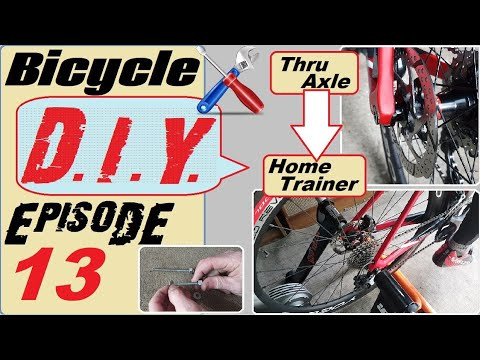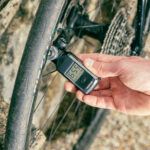So, you’ve got a shiny new bike with a thru axle, and you’re ready to keep up your training indoors with your trusty wheel-on trainer. But wait, the Bike Axle situation is throwing a wrench in the works. Many cyclists find themselves in this exact spot, wondering how to bridge the gap between modern bike tech and classic trainer setups. Let’s break down the common problem and explore the solutions to get you back on track.
The core issue arises because thru axles, designed for increased stiffness and control, are wider and have a different mounting system compared to the quick-release skewers traditionally used with wheel-on trainers. This difference means your new bike’s rear bike axle is simply not compatible with the standard clamping mechanism of your existing trainer.
Facing this bike axle incompatibility, you essentially have a few paths to consider:
One immediate, albeit potentially costly, solution is to upgrade to a direct drive trainer. These trainers require you to remove your bike’s rear wheel entirely and mount the bike directly to the trainer. Direct drive trainers are generally compatible with thru axles out of the box or with readily available adapters. However, this is often the most expensive option and might not be ideal if you’re looking for a budget-friendly fix.
Another option, especially if you have an older bike, is to dedicate your old bike to trainer duty. This keeps your new bike pristine for outdoor rides and avoids any compatibility hassles. However, it also means maintaining two bikes, and perhaps not fully utilizing your new bike’s capabilities even indoors.
The most direct solution, and the one many cyclists explore first, is to find a replacement trainer axle or adapter. These are designed to mimic the dimensions of a standard quick-release skewer while fitting into your bike’s thru axle dropouts. The idea is to create a compatible interface between your thru axle bike and the wheel-on trainer’s clamp.
However, choosing the right trainer axle adapter is crucial. Compatibility can be tricky, with various axle lengths, thread pitches, and trainer clamp designs in play. Simply finding an axle that fits your bike’s dropouts doesn’t guarantee it will work seamlessly with your specific trainer. As illustrated in the image, some cyclists might consider DIY or non-standard solutions, raising questions about safety and bike frame integrity.
Before opting for a replacement bike axle, carefully check compatibility charts provided by trainer and axle manufacturers. Ensure the chosen axle is designed for your specific trainer model and bike thru axle standard. Pay close attention to the axle length and thread specifications to avoid damage or instability.
Ultimately, the best approach depends on your budget, equipment, and comfort level. While a direct drive trainer offers a premium and often hassle-free experience, exploring compatible trainer axles can be a more economical way to keep using your wheel-on trainer with your new thru axle bike. Just prioritize safety and compatibility to ensure a smooth and secure indoor cycling experience.



